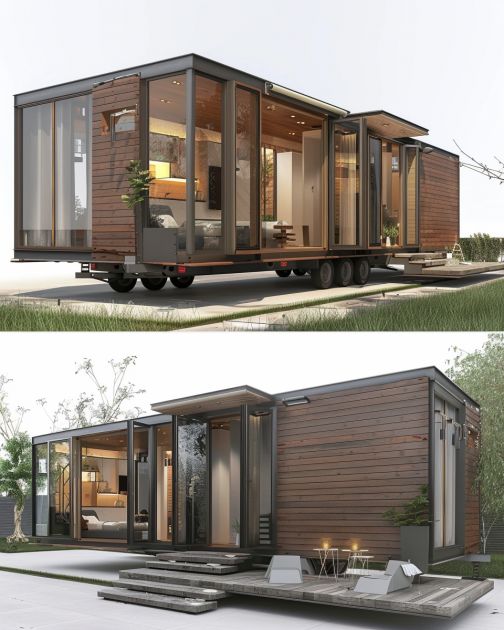The terms 'mobile home' and 'tiny house on wheels' may often be used interchangeably in casual conversations, however, there are distinct differences between the two. While both types of homes provide the allure of being less tethered to a single location, they contrast sharply in design philosophy, legal classification, construction methods, and lifestyle ethos.
This article explores the nuanced ways in which mobile homes and tiny houses on wheels differ from one another. Understanding these distinctions can help potential homeowners make well-informed decisions that align with their housing needs and lifestyle preferences.
Advertisement
Difference 1: Legal Classification and Standards
1. Mobile homes, now more commonly referred to as manufactured homes, are built according to federal HUD standards. This means they are subject to federal building codes and regulations put in place by the U.S. Department of Housing and Urban Development. These standards are designed to ensure the home's safety and durability.
2. Tiny houses on wheels, on the other hand, don't have a standardized set of building codes that apply nationwide. They often adhere to local RV (Recreational Vehicle) standards if they are intended for travel. Alternatively, some may follow voluntary guidelines, like those from the American Tiny House Association or the National Organization of Alternative Housing, to ensure a degree of safety and functionality.
Difference 2: Purpose and Design Philosophy
1. Mobile homes are built to serve as affordable, permanent residences. While they are moveable, they are not designed for frequent relocations. Their design focuses on maximizing space within a certain size constraint, typically emulating traditional house amenities and layouts.
2. Tiny houses on wheels are built with the idea of minimalist living and mobility. They are about simplifying one’s living space and possessions, often promoting a philosophy of environmental consciousness and economic freedom. The designs are incredibly varied but are usually highly personalized and multifunctional to make the most of a smaller space and to enable easier mobility.
Difference 3: Size and Mobility
1. Mobile homes come in a variety of sizes, with single-wide and double-wide being the most common. They require professional assistance to move due to their size, weight, and the complexity of setup at a new location. They are mobile in the sense that they can be transported from factory to site, or between sites if necessary.
2. Tiny houses on wheels are designed to be highly mobile and are comparable to RVs in this respect. They are typically lighter and smaller than mobile homes, making them easier to tow with a properly equipped vehicle. This offers owners the flexibility to change locations relatively easily.
Difference 4: Community Perception and Lifestyle
1. Mobile homes have traditionally been associated with mobile home parks and a perception of lower-cost housing. As such, they may not be allowed in certain residential areas where zoning laws prohibit manufactured homes.
2. Tiny houses on wheels, with their rising popularity, are often seen as a trendy and eco-friendly way of living. The movement is associated with a lifestyle choice that embraces less materialism and more mobility. Yet, similar to mobile homes, they can also face zoning and building code challenges depending on the jurisdiction.
Difference 5: Resale Value and Longevity
1. Mobile homes typically depreciate in value over time, not unlike vehicles. They are regarded as personal property rather than real estate, which affects how they are financed and taxed.
2. Tiny houses on wheels have a less predictable resale market since they are a relatively new phenomenon. They can either depreciate like RVs and mobile homes or appreciate depending on the craftsmanship, materials used, and the demand in the market. Moreover, they may be considered personal property or, in some cases, real property if they are permanently affixed to land with a foundation.
Advertisement
Indeed, while they share some superficial similarities, mobile homes and tiny houses on wheels cater to different lifestyle needs, abide by different standards, and are perceived differently by society. Your husband is correct in asserting the differences, which are significant not only in form and function but in the philosophy and intention behind each type of dwelling.
